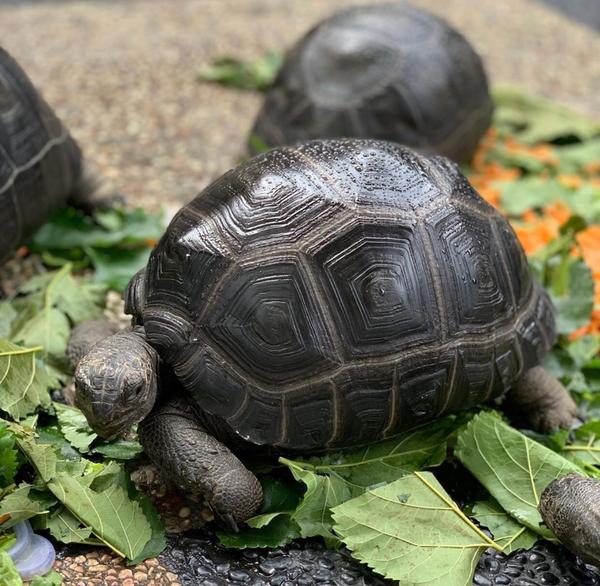Don't Make This Silly Mistake With Your radiated tortoises for sale
Radiated Tortoises for Sale: An Overview of Care, Conservation, and Responsibilities
Radiated tortoises (Astrochelys radiata) are amongst the most striking tortoise species discovered in the world, noted for their beautiful, star-patterned shells and distinctive appearance. Belonging to Madagascar's dry forests and scrublands, these tortoises are currently facing a wide range of hazards in the wild due to habitat loss, poaching, and prohibited trade. As a result, radiated tortoises have caught the attention of unique pet lovers, leading to numerous people looking for information on acquiring these special animals. However, interested buyers ought to approach this venture with a thorough understanding of their requirements, conservation status, and the ethical factors to consider of owning such a species.
Comprehending Radiated Tortoises
Physical Characteristics
Radiated tortoises have an unique and attractive appearance. Their shells, which are normally black or dark brown, feature yellow lines radiating out from the center, creating a star-like pattern. Adult tortoises can reach lengths of 12 to 14 inches (30 to 35 cm) and can weigh in between 30 to 50 pounds (14 to 23 kg). Their effective limbs and tough construct allow them to browse their natural environment successfully.
Natural Habitat and Behavior
In the wild, radiated tortoises populate Madagascar's dry deciduous forests and scrublands. They mostly eat a variety of grasses and other greenery, growing on a diet plan abundant in fiber. These tortoises are also known for their sociable habits, often discovered basking in groups. Nevertheless, in captivity, their needs can be more demanding due to the lack of space and natural stimuli.
The Importance of Conservation
Radiated tortoises are classified as seriously threatened by the International Union for Conservation of Nature (IUCN). Their population has significantly declined over the years, credited to:
- Habitat Loss: Deforestation for farming and human development rapidly diminishes their natural habitat.
- Poaching: Illegal wildlife trade has actually caused a considerable decrease in their numbers, with tortoises frequently recorded for the animal trade.
- Climate Change: Changes in environment can affect their habitat and food accessibility, putting extra stress on already delicate populations.
Conservation Efforts
Organizations and individuals worldwide are working to safeguard the radiated tortoise through different initiatives. Some key efforts consist of:
- Habitat Protection: Establishing secured areas to save their natural environment and some environmental remediation activities.
- Legislation: Enforcing laws to combat illegal trade and safeguarding vulnerable tortoise populations.
- Awareness Campaigns: Raising awareness about the importance of preservation efforts and the responsibilities of pet ownership.
Considerations Before Buying a Radiated Tortoise
The decision to buy a radiated tortoise ought to not be ignored. Prospective owners need to dedicate to providing correct care, nutrition, and an appropriate habitat. Here are some important elements to think about:
Legal Aspects
- Make sure that the tortoise is sourced from a reputable breeder or rescue organization. The illegal family pet trade postures considerable threats to the species, and supporting ethical practices is important.
- Familiarize yourself with local laws concerning the ownership of exotic types, which might differ by area.
Habitat Requirements
Developing an ideal environment for a radiated tortoise is vital for its health and well-being.
- Space: A large enclosure, either indoors or outdoors, is required. Adult radiated tortoises need at least 100 square feet of space to thrive.
- Temperature and Humidity: Optimal basking temperature levels should be in between 90 ° F to 95 ° F(32 ° C to 35 ° C), with ambient temperatures around 75 ° F (24 ° C). Humidity levels should stay in between 50% and 70%.
- Shelter: Provide a humid hide or shelter to help them control their body temperature.
- Substrate: Utilize a mix of soil, sand, and coconut coir to enable for burrowing.
Dietary Needs
- A correct diet is important for the overall health of radiated tortoises. They grow on a different diet plan, including high-fiber lawns, leafy greens like dandelions, and occasional fruits. Calcium and vitamin supplements ought to likewise be offered, particularly for more youthful tortoises.
Life expectancy and Commitment
Radiated tortoises can live for over 50 years, making them a long-lasting commitment. Potential owners should consider whether they want to dedicate the necessary time and resources throughout the tortoise's life.
Frequently asked questions
1. Just how much do radiated tortoises cost?
The price of radiated tortoises differs commonly, typically ranging from ₤ 1,000 to ₤ 3,000, depending upon age, size, and seller reputation. However, costs may vary based on market schedule.
2. Can radiated tortoises be kept in indoor enclosures?
While they can be kept inside your home, radiated tortoises require a spacious and enriched environment that simulates their natural environment. Outside enclosures are chosen as they provide sufficient room for motion and natural sunshine exposure.
3. What should I do if I can no longer take care of my radiated tortoise?
If you can no longer take care of your tortoise, it's important to discover a credible rescue company or sanctuary. Never ever release a captive tortoise into the wild, as it postures dangers to both the tortoise and the native wildlife.
4. Are radiated tortoises social animals?
Yes, radiated tortoises are usually social and can be seen basking and connecting with each other in the wild. Nevertheless, intros should be thoroughly handled in captivity to prevent aggression.
Radiated tortoises are not only beautiful creatures however likewise a key types in their environment. Before getting one, prospective owners should consider different elements, consisting of legality, environment requirements, dietary requirements, and long-term dedications. More notably, supporting preservation efforts is important in guaranteeing that future generations can value these remarkable tortoises, both in captivity and in their natural environments. Therefore, anybody searching for radiated tortoises for sale ought to focus on ethical sourcing and be completely prepared for the obligations of providing appropriate care.
Name: Kjellerup Callesen

Comments
Post a Comment